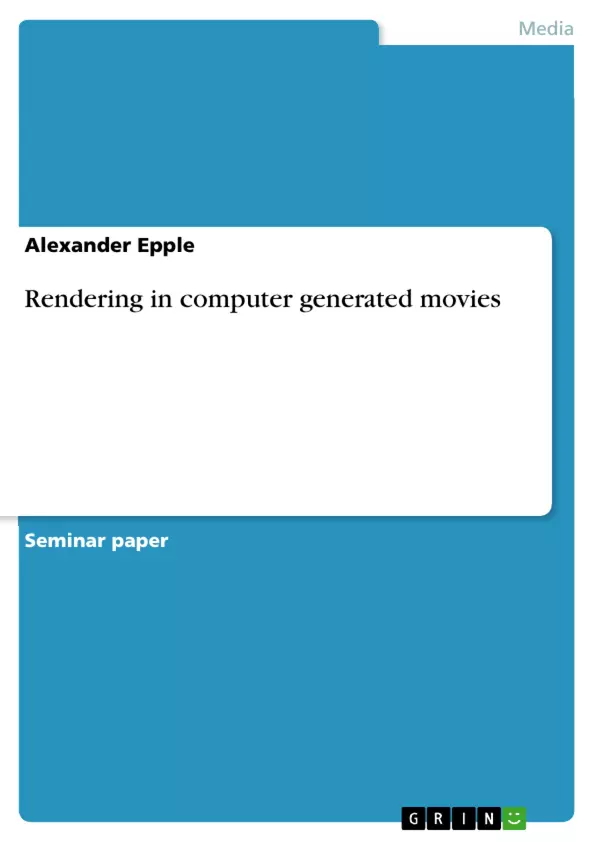Cartoon films nowadays look incredibly realistic, compared to movies produced twenty years ago. To make something that was computer generated look realistic is not an easy task. This short paper discusses how animated movies are rendered and which techniques exist.
The general rendering pipeline will be explained and real time rasterization will be compared to the REYES algorithm used in movie production. Ray tracing, its extensions, problems and current solutions will be discussed in detail. Finally, hybrid rendering systems and the performance of rendering systems over the years will be discussed in this state-of-the-art report. The performance of the various rendering techniques is also highlighted and the differences between them are shown.
Table of Contents
- Introduction
- The Rendering Pipeline
- Application Stage
- Geometry Stage
- Rasterizer Stage
- Rasterization
- General Approach
- REYES (Renders Everything You Ever Saw)
- The REYES Algorithm
- REYES versus Standard Rasterization
- Ray tracing
- General Approach
- Recursive Ray Tracing and Path Tracing
- Cornell Box Example
- Monte Carlo
- Sampling Patterns
- Improvements and Speed-Ups
- SIMD and Multi-Core Processors
- Path Differentials
- Denoising
- Ray reordering
- Bidirectional Path Tracing
- Hybrid Rendering Techniques
Objectives and Key Themes
This paper explores the various techniques used for rendering in computer-generated movies, focusing on the advancements and challenges involved in achieving photorealistic images. The paper aims to provide a comprehensive overview of the rendering pipeline, compare and contrast the two most important techniques – rasterization and ray tracing – and delve into their advantages and disadvantages.
- Rendering techniques in computer-generated movies
- Rasterization: Traditional and REYES approaches
- Ray tracing: General approach, recursive and path tracing, Monte Carlo methods, and improvements
- Hybrid rendering techniques
- Performance and production quality of different rendering techniques
Chapter Summaries
The paper begins by introducing the rendering process, highlighting its importance in computer-generated movies. It then explains the general rendering pipeline, outlining the three stages: application, geometry, and rasterizer. Each stage is discussed in detail, focusing on the data processing and transformations that occur during each step.
The paper delves into rasterization, explaining the traditional approach used in real-time rendering and comparing it to the REYES algorithm developed for Pixar's Renderman. The REYES algorithm's advantages, including its ability to handle complex scenes and its efficient use of memory, are highlighted.
Ray tracing is then presented, discussing its general approach and the various techniques used, including recursive ray tracing, path tracing, and Monte Carlo methods. The chapter also examines the improvements made to ray tracing over the years, such as the use of SIMD and multi-core processors, path differentials, and denoising filters.
Keywords
This paper explores the world of computer-generated movie rendering, encompassing topics such as rasterization, ray tracing, path tracing, REYES, Monte Carlo methods, denoising, and hybrid rendering techniques. It examines both traditional and modern approaches to achieving photorealistic images, highlighting the importance of computational power, algorithmic advancements, and efficient memory management in achieving high-quality results.
- Citar trabajo
- Alexander Epple (Autor), 2018, Rendering in computer generated movies, Múnich, GRIN Verlag, https://www.grin.com/document/471236



